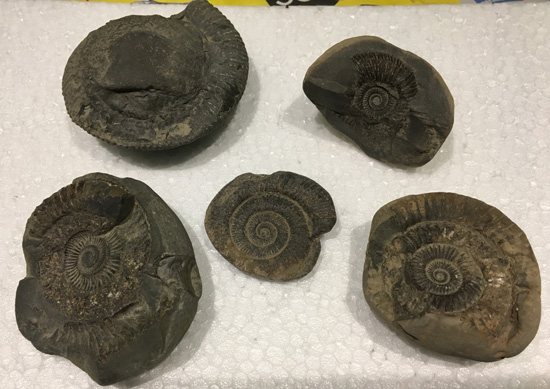Autumn Storms Bring Rare Fossils
The autumn weather is definitely with us and as the nights draw in and cold winds begin to bite, we can be comforted by the fact that bad weather, particularly storms around the coast of the British Isles will expose more fossils for collectors to find.
With the tourist season in the UK ending (Covid-19 restrictions preventing many people from travelling to holiday destinations), local fossil collectors will have the deserted beaches to themselves. Hopefully, the storms this autumn will bring lots of material out from the cliffs and down to the foreshore, enabling eagle-eyed fossil hunters to discover a few choice specimens to add to their collection.

Picture credit: Everything Dinosaur
Stay Safe When Collecting Fossils
Storms and bad weather can make cliffs even more dangerous than usual. The cliffs could become saturated with water and this can cause mud slips and landslides. Falling rocks are also a hazard. We urge all fossil collectors to take extreme care when out fossil hunting on beaches and to avoid getting too close to the cliffs.
We advise that fossil hunters make themselves aware of the fossil collecting code, full details of which can be found on an earlier Everything Dinosaur blog post here: The Fossil Collecting Code.
Fossil hunting is an enjoyable and rewarding hobby, however, we urge all fossil hunters to consider their safety and the safety of the others in their group if they intend to take advantage of recent bad weather to go fossil collecting.
Visit the award-winning Everything Dinosaur website: Prehistoric Animal Toys and Figures.

